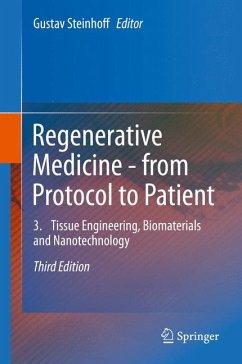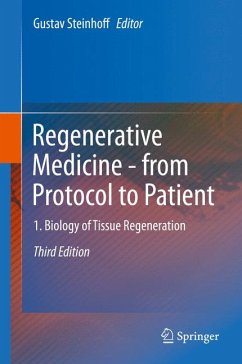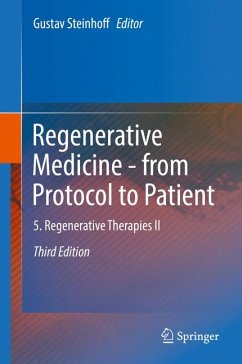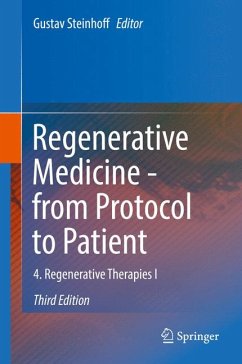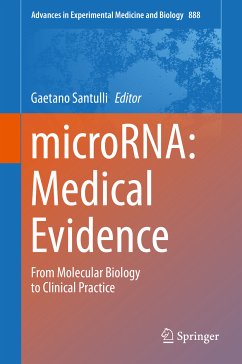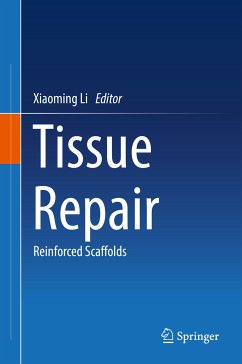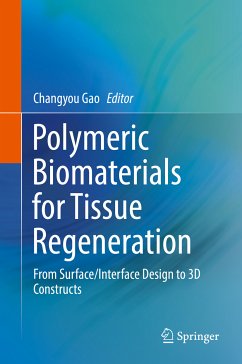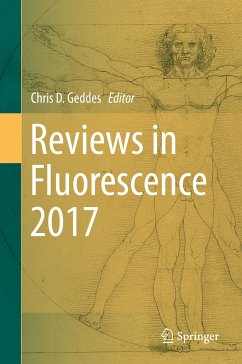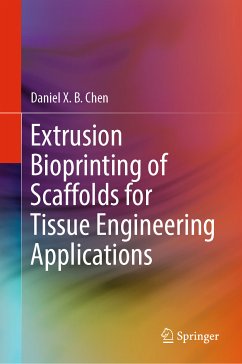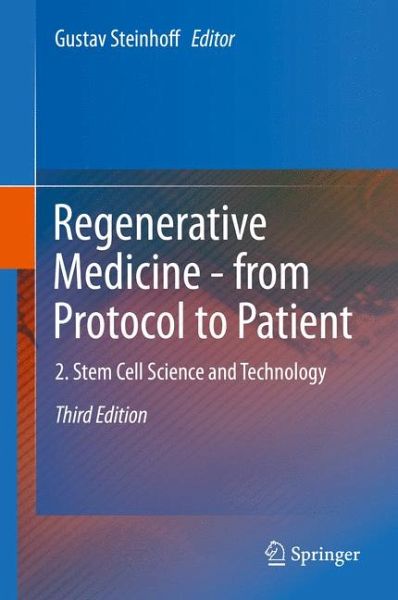
Regenerative Medicine - from Protocol to Patient (eBook, PDF)
2. Stem Cell Science and Technology
Redaktion: Steinhoff, Gustav
Versandkostenfrei!
Sofort per Download lieferbar
72,95 €
inkl. MwSt.
Weitere Ausgaben:

PAYBACK Punkte
36 °P sammeln!
Regenerative medicine is the main field of groundbreaking medical development and therapy using knowledge from developmental and stem cell biology, as well as advanced molecular and cellular techniques. This collection of volumes on Regenerative Medicine: From Protocol to Patient, aims to explain the scientific knowledge and emerging technology as well as the clinical application in different organ systems and diseases. International leading experts from all over the world describe the latest scientific and clinical knowledge of the field of regenerative medicine. The process of translating sc...
Regenerative medicine is the main field of groundbreaking medical development and therapy using knowledge from developmental and stem cell biology, as well as advanced molecular and cellular techniques. This collection of volumes on Regenerative Medicine: From Protocol to Patient, aims to explain the scientific knowledge and emerging technology as well as the clinical application in different organ systems and diseases. International leading experts from all over the world describe the latest scientific and clinical knowledge of the field of regenerative medicine. The process of translating science of laboratory protocols into therapies is explained in sections on regulatory, ethical and industrial issues. This collection is organized into five volumes: (1) Biology of Tissue Regeneration, (2) Stem Cell Science and Technology, (3) Tissue Engineering, Biomaterials and Nanotechnology, (4) Regenerative Therapies I, and (5) Regenerative Therapies II. The textbook gives the student,the researcher, the health care professional, the physician and the patient a complete survey on the current scientific basis, therapeutical protocols, clinical translation and practiced therapies in regenerative medicine.
Volume 2 contains sixteen chapters addressing advanced knowledge on "Stem Cell Science and Technology" addressing basic classification technology, cell biology of stemness state and regulatory molecular pathways. Mechanisms and technology of cell programming are explained, as well as the pathology of cancer cells and dedifferentiation signalling. Pluripotent, multipotent germline and tissue specific human stem cells are classified and qualified according to their respective biological function or tissue regeneration. Leading stem cell scientists from all over the world explain advanced technology, latest knowledge, and clinical implications of human stem cell science in a unique, comprehensive and detailed outline.
Dieser Download kann aus rechtlichen Gründen nur mit Rechnungsadresse in A, B, BG, CY, CZ, D, DK, EW, E, FIN, F, GR, HR, H, IRL, I, LT, L, LR, M, NL, PL, P, R, S, SLO, SK ausgeliefert werden.



